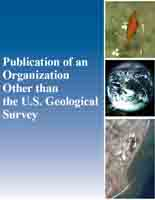Earth’s surface is sculpted by numerous processes that move sediment, ranging from gradual and benign to abrupt and catastrophic. Although infrequent, high-magnitude sediment mobilization events can be hazardous to people and infrastructure, leaving topographic imprints on the landscape and remarkable narratives in the historical record. Hazardous events such as fires, storms, and earthquakes accelerate erosion and sediment transport, increasing landscape sensitivity to subsequent perturbations, thus forming a cascading hazard. Although the redistribution of sediment across Earth’s landscape can result in higher risks to vulnerable populations, cascading processes are commonly unaccounted for in hazard assessments. Cascading hazards can occur almost immediately after triggering events, such as coseismic landslides, or over months, years, or even decades after an initial perturbation, such as debris flows after wildfires or flooding in channels alluviated by volcanic debris. Sediment cascades span Earth’s surface, from mountaintops to river valleys, where erosion, deposition, and aggradation can lead to a myriad of hazardous processes, including decreased river conveyance capacity, which increases the likelihood of downstream flooding. An improved understanding of the magnitude, frequency, and persistence of cascading hazards is critical given the rapid changes in the frequency and severity of storms, fires, sea-level change, and cryospheric melting, as well as the expansion of high-population-density urban footprints in regions susceptible to solid Earth hazards. Understanding the full consequences and underlying physics of Earth’s cascading land surface hazards can help minimize future human and economic losses.


